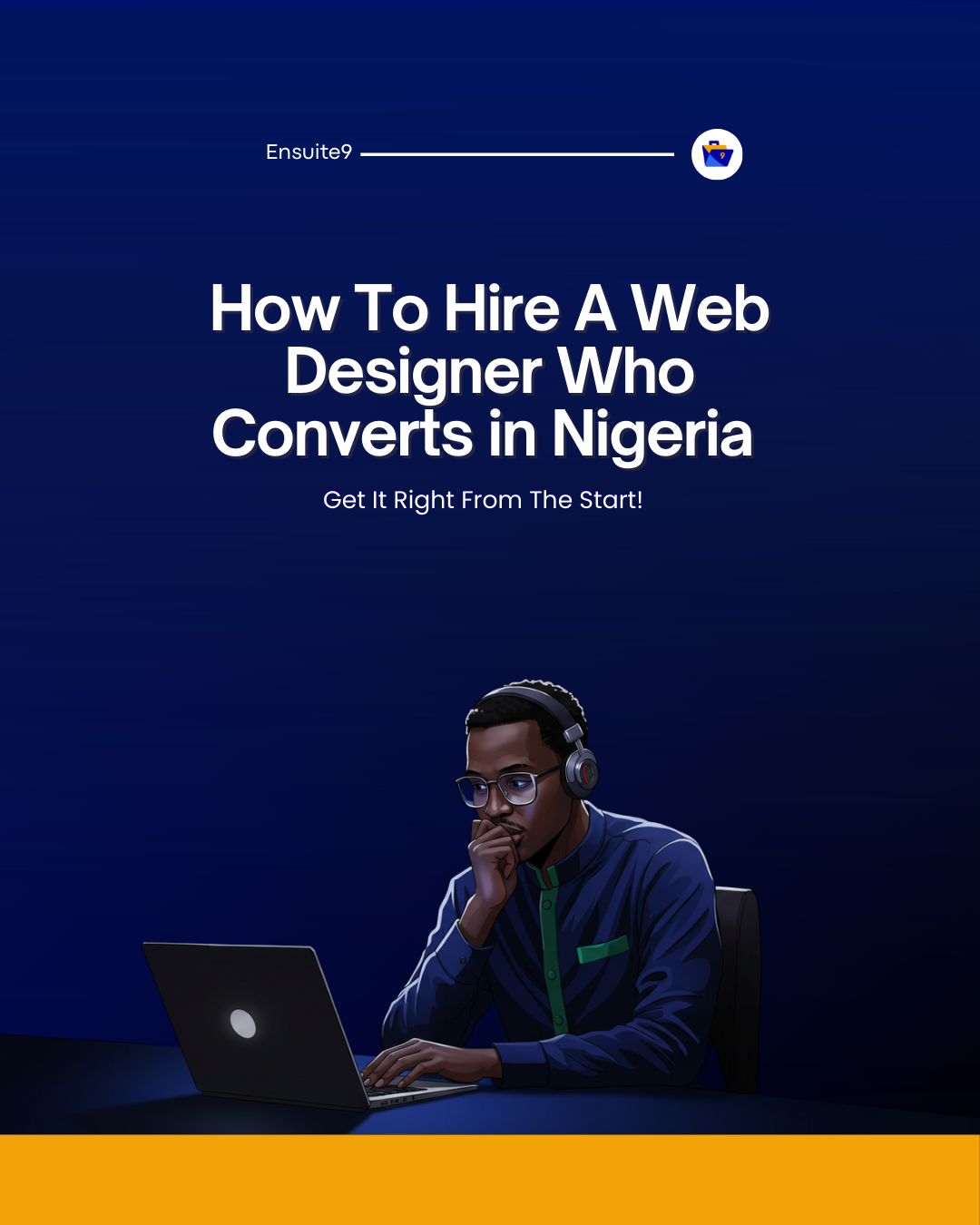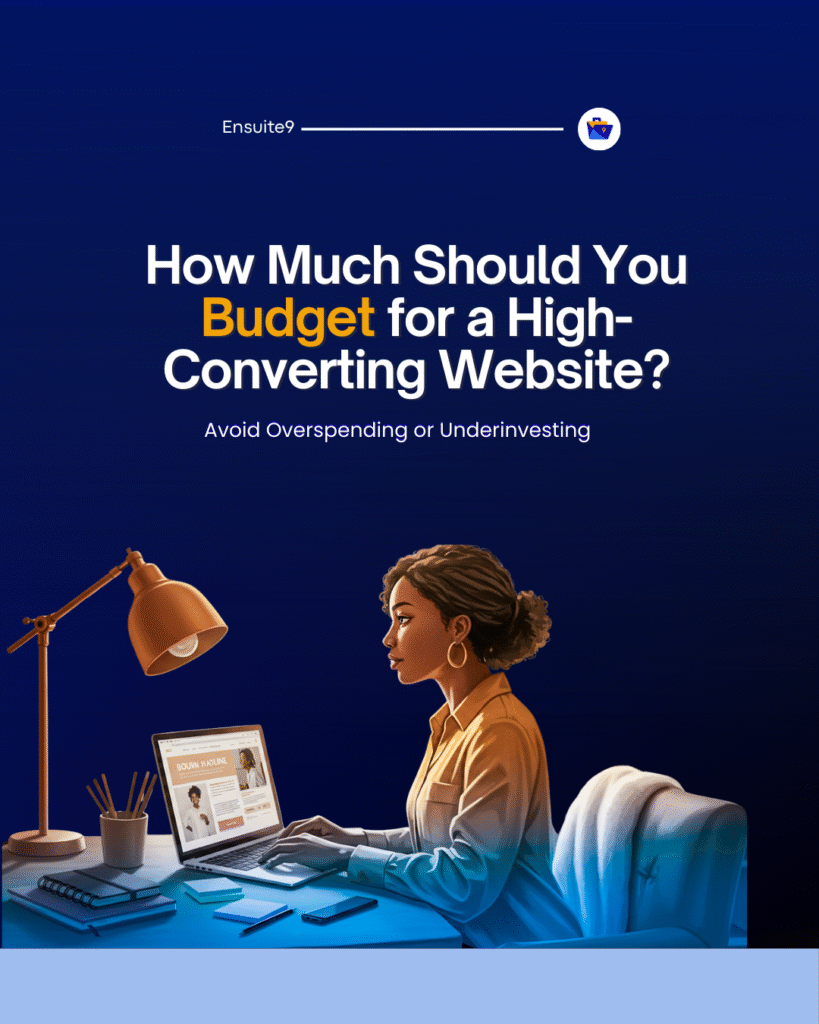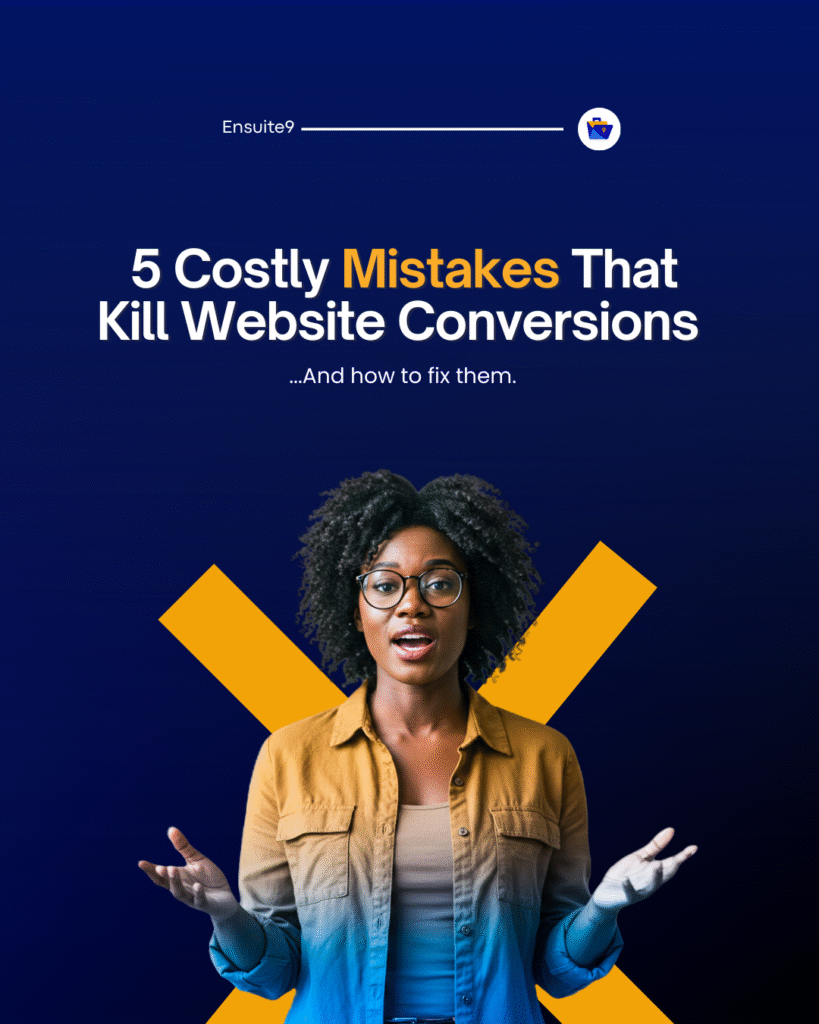If you’ve ever thought, “I just need a good-looking website,” it’s time to rethink that approach. A pretty site is nice, but if it doesn’t generate leads, inquiries, or sales, it is not doing its job. That’s why finding the right web designer in Nigeria is so crucial. A professional designer isn’t just an artist making pages look good, they are a strategist who ensures your website works as a 24/7 sales tool.
The truth is, a lot of websites in Nigeria fail because they are built to impress the owner, not to convert visitors. This guide will show you how to hire a web designer in Nigeria who understands strategy, psychology, and measurable business goals, so your website becomes an asset, not just decoration.
Why Hiring the Right Web Designer in Nigeria Matters
Your website is not a digital brochure; it’s your most powerful sales and trust-building tool. Done right, it should attract visitors, build credibility, and guide them to take action, whether that’s booking a consultation, making a purchase, subscribing, or making a donation.
But to achieve this, you need a web designer who goes beyond surface-level design and integrates strategy, user experience (UX), content structure, SEO, and speed optimization.
Without this, even the most beautiful website will end up as a vanity project with no return on investment.
The DNA of a Conversion-Driven Website: What Every Web Designer Must Know
Not every designer understands the science of conversions. The best web designers combine creativity with strategy. The essential elements include:
-
Clear content hierarchy that guides visitors toward key actions.
-
Responsive design for mobile and tablet use (critical in Nigeria where over 70% of traffic is mobile).
-
Fast performance because every extra second of load time reduces conversions.
-
Trust signals such as testimonials, client logos, and certifications.
-
Built-in SEO structure for search visibility.
-
Conversion pathways like contact forms, lead magnets, or eCommerce checkout flows.
-
Analytics and tracking so success can be measured.
If a web designer can’t clearly explain how these elements are integrated into their process, they’re not building a business tool, they’re just creating a brochure.
Clarity Before Creativity: Defining Your Goals First
Before you even search for a web designer in Nigeria, you need clarity on your business goals. Without this, even the best designer cannot deliver real results.
Ask yourself:
-
What is the single most important action I want visitors to take?
-
How will I measure success? (sales, signups, inquiries, donations)
-
Who exactly am I targeting? (demographics, needs, pain points)
When you begin conversations with clarity, you’ll quickly filter out designers who only talk about colors instead of conversions.
How to Evaluate a Web Designer Beyond Portfolio Looks
Most clients only look at screenshots in a portfolio. But a good-looking homepage means nothing if it doesn’t convert. When evaluating a web designer in Nigeria, go deeper:
-
Visit live websites they’ve built — test speed, navigation, and mobile responsiveness.
-
Look for measurable results — can they share case studies like “helped client increase leads by 40%”?
-
Check for trust signals — testimonials, client references, and reviews.
A true professional web designer should be able to show you proof of impact, not just pretty layouts.
Questions to Ask Before Hiring a Web Designer in Nigeria
When interviewing candidates, don’t just ask, “How much will it cost?” Instead, ask questions that reveal whether they understand strategy:
-
What is your process from discovery to launch?
-
How do you integrate SEO and conversion strategy into design?
-
Who writes or refines the content?
-
What happens after launch — is there training or ongoing support?
-
How do you ensure ownership of the website belongs to me?
A professional web designer should also ask you detailed questions about your business model, audience, and goals. If they only ask about colors, run.
Understanding Pricing: What a Web Designer in Nigeria Costs in 2025
Pricing varies depending on complexity, features, and the type of professional you hire. Here are realistic ranges for 2025:
-
Basic brochure websites: ₦200,000 – ₦700,000
-
Custom business sites: ₦1,000,000 – ₦5,000,000
-
Complex eCommerce builds: ₦5,000,000 – ₦12,000,000+
-
Ongoing SEO and maintenance: ₦50,000 – ₦500,000 per month
When you hire a web designer, you’re not just paying for design hours — you’re investing in research, UX, development, testing, and post-launch support. Cheap sites often cut corners, which leads to higher costs in the long run.
Ownership, Support, and Strategy — Signs of a Reliable Web Designer in Nigeria
One of the biggest mistakes Nigerian businesses make is failing to clarify ownership and support upfront. A reliable web designer in Nigeria should guarantee:
-
You own your domain, hosting, and all content.
-
You receive admin access and source files.
-
Post-launch support terms are clear and transparent.
-
Backups, SSL, and security updates are part of the package.
Many business owners lose access to their sites or pay unnecessary fees because they overlooked these details. Don’t let that happen to you.
Strategy Over Style: What Separates Great Web Designers in Nigeria from the Rest
A true professional web designer is not just an artist, they are a strategist. They will:
-
Understand your sales funnel.
-
Design conversion pathways that capture leads.
-
Optimize your site for SEO from day one.
-
Test CTAs, navigation, and usability.
-
Plan for future scalability.
If your potential hire doesn’t talk about conversions, analytics, or SEO, they’re not building a growth platform.
The Future-Proof Website: Why You Need Long-Term Thinking
Hiring a web designer in Nigeria is not a one-time event. Your website needs to adapt to changing algorithms, evolving user behavior, and competitive shifts. A future-proof site is easy to update, SEO-friendly, and built with analytics for continuous improvement.
Think long-term: your website is not just today’s project but tomorrow’s growth engine.
The Ensuite9 Approach: A Web Designer in Nigeria That Delivers Results
At Ensuite9, we don’t just design websites, we build conversion systems for Nigerian businesses and global clients. Every site we deliver is:
-
Fast and mobile-first.
-
SEO-optimized from the ground up.
-
Strategically designed around clear business goals.
-
Supported with training, ownership guarantees, and post-launch care.
Whether you’re a startup on a tight budget or a premium brand seeking custom solutions, our approach adapts to your needs. Clients trust us because we combine creativity with strategy, and we measure success by outcomes, not just appearances. When you hire Ensuite9, you’re not getting a digital brochure. You’re getting a business platform that sells.
Your Website Should Pay for Itself
Hiring a web designer in Nigeria is more than a design decision. It’s a strategic investment in your business’s future. A well-built, conversion-focused website pays for itself many times over, by generating leads, increasing sales, and amplifying your brand’s credibility.
So don’t settle for a pretty site that flatters your eyes but fails your business. Choose a partner who understands conversions, strategy, and growth. Because when you find the right web designer, you don’t just get a website, you get a tool that works for you 24/7, turning visitors into customers and curiosity into revenue.


